分子别名(Synonym)
CTLA4,CD152
表达区间及表达系统(Source)
Biotinylated Human CTLA-4, His,Avitag (CT4-H82E3) is expressed from human 293 cells (HEK293). It contains AA Ala 37 - Phe 162 (Accession # P16410-1).
Predicted N-terminus: Ala 37
Request for sequence
蛋白结构(Molecular Characterization)

This protein carries a polyhistidine tag at the C-terminus, followed by an Avi tag (Avitag™).
The protein has a calculated MW of 17.2 kDa. The protein migrates as 22-30 kDa under reducing (R) condition, and 37-45 kDa when calibrated against Star Ribbon Pre-stained Protein Marker under non-reducing (NR) condition (SDS-PAGE) due to glycosylation.
标记(Labeling)
Biotinylation of this product is performed using Avitag™ technology. Briefly, the single lysine residue in the Avitag is enzymatically labeled with biotin.
蛋白标记度(Protein Ratio)
Passed as determined by the HABA assay / binding ELISA.
内毒素(Endotoxin)
Less than 1.0 EU per μg by the LAL method.
纯度(Purity)
>95% as determined by SDS-PAGE.
>90% as determined by SEC-MALS.
制剂(Formulation)
Lyophilized from 0.22 μm filtered solution in PBS, pH7.4 with trehalose as protectant.
Contact us for customized product form or formulation.
重构方法(Reconstitution)
Please see Certificate of Analysis for specific instructions.
For best performance, we strongly recommend you to follow the reconstitution protocol provided in the CoA.
存储(Storage)
For long term storage, the product should be stored at lyophilized state at -20°C or lower.
Please avoid repeated freeze-thaw cycles.
This product is stable after storage at:
- -20°C to -70°C for 12 months in lyophilized state;
- -70°C for 3 months under sterile conditions after reconstitution.
质量管理控制体系(QMS)
电泳(SDS-PAGE)
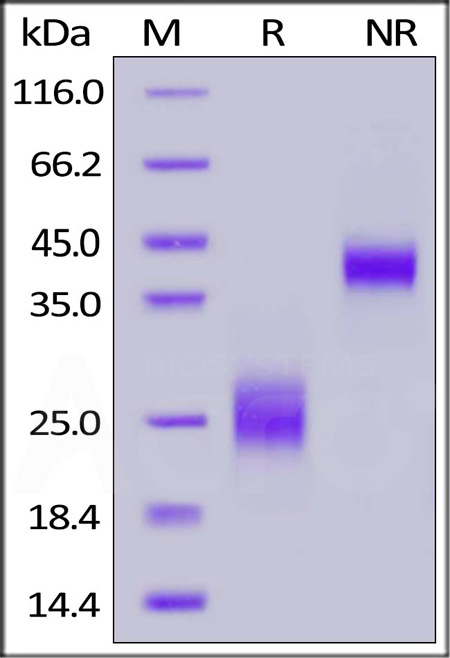
Biotinylated Human CTLA-4, His,Avitag on SDS-PAGE under reducing (R) and non-reducing (NR) conditions. The gel was stained with Coomassie Blue. The purity of the protein is greater than 95% (With Star Ribbon Pre-stained Protein Marker).
SEC-MALS
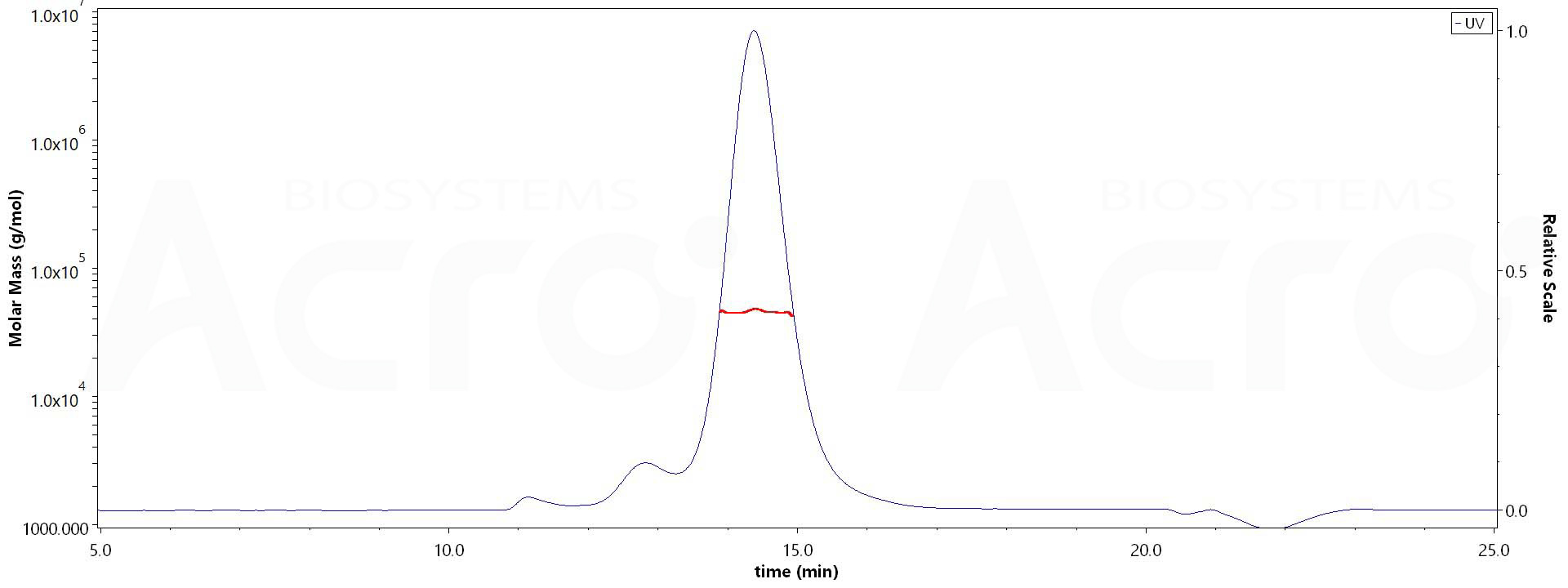
The purity of Biotinylated Human CTLA-4, His,Avitag (Cat. No. CT4-H82E3) is more than 90% and the molecular weight of this protein is around 40-60 kDa verified by SEC-MALS.
Report
活性(Bioactivity)-ELISA
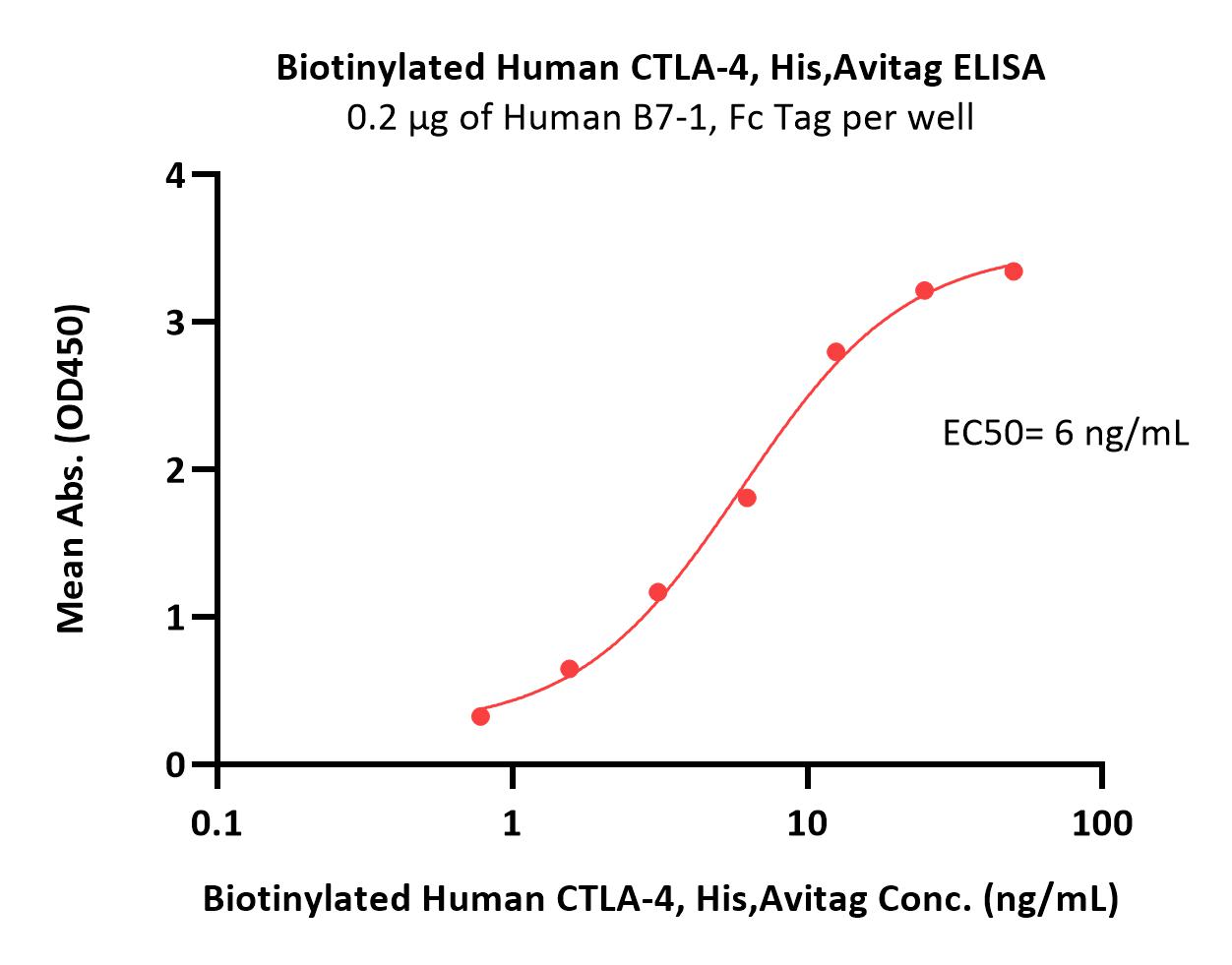
Immobilized Human B7-1, Fc Tag (Cat. No. B71-H5259) at 2 μg/mL (100 μL/well) can bind Biotinylated Human CTLA-4, His,Avitag (Cat. No. CT4-H82E3) with a linear range of 0.7-13 ng/mL (QC tested).
Protocol
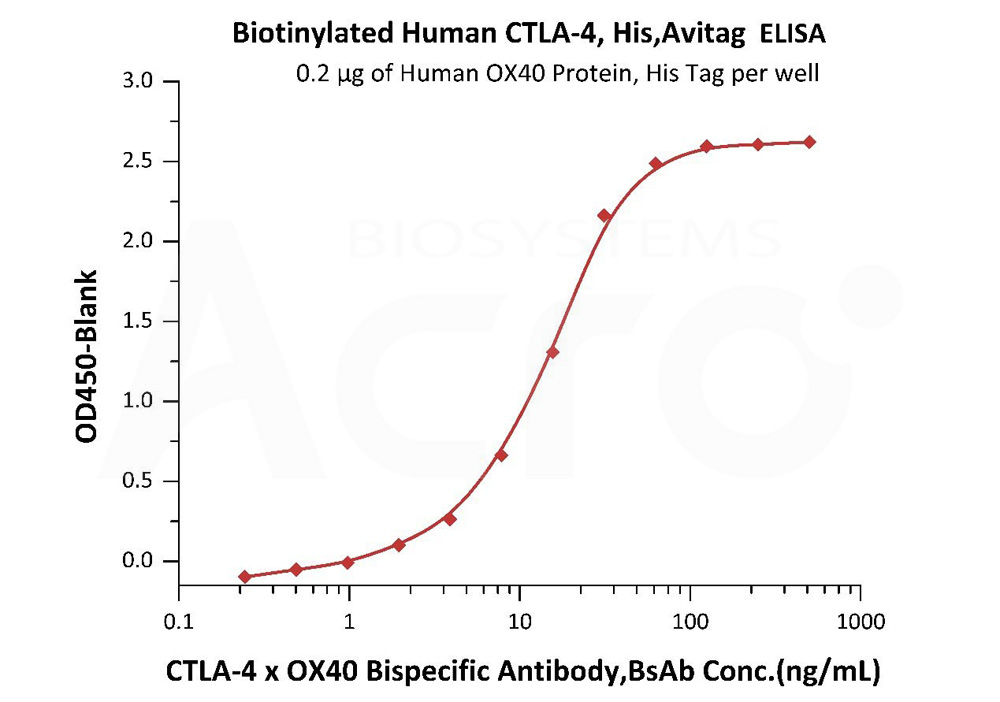
Quantitative Analysis of CTLA-4 x OX40 Bispecific Antibody in Human Serum by Intact Assay.
Immobilized Human OX40 Protein, His Tag (MALS verified) (Cat. No. OX0-H5224) at 2 μg/mL, add increasing concentrations of CTLA-4 x OX40 bispecific antibody in 50% Human serum and then add Biotinylated Human CTLA-4, His, Avitag (Cat. No. CT4-H82E3) at 0.2 μg/mL. Detection was performed using HRP-conjugated streptavidin with sensitivity of 4 ng/mL (Intact assay, Routinely tested).
Protocol
活性(Bioactivity)-SPR
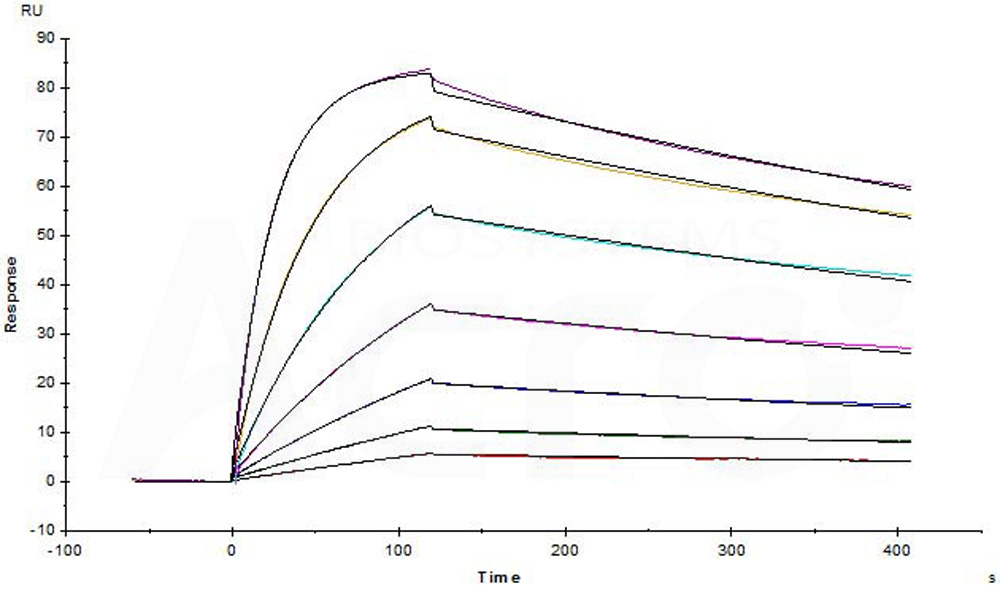
Biotinylated Human CTLA-4, His,Avitag (Cat. No. CT4-H82E3) captured on Biotin CAP - Series S sensor Chip can bind Yervoy (Ipilimumab) with an affinity constant of 0.635 nM as determined in a SPR assay (Biacore T200) (Routinely tested).
Protocol
 +添加评论
+添加评论
- 180XXXXXXX7
- 购买了acro的biotinylated humanCTLA 4用Fortebio方法,测试了在不同PH下,伊匹木单抗结合CTLA4的亲和力,测试结果和Acro的SPR的数据是一致的。效果非常好。
- 2022-4-25
背景(Background)
CTLA-4 (Cytotoxic T-Lymphocyte Antigen 4) is also known as CD152 (Cluster of differentiation 152), is a protein receptor that downregulates the immune system. CTLA4 is a member of the immunoglobulin superfamily, which is expressed on the surface of Helper T cells and transmits an inhibitory signal to T cells. The protein contains an extracellular V domain, a transmembrane domain, and a cytoplasmic tail. Alternate splice variants, encoding different isoforms. CTLA4 is similar to the T-cell co-stimulatory protein, CD28, and both molecules bind to CD80 and CD86, also called B7-1 and B7-2 respectively, on antigen-presenting cells. CTLA4 transmits an inhibitory signal to T cells, whereas CD28 transmits a stimulatory signal. Intracellular CTLA4 is also found in regulatory T cells and may be important to their function. Fusion proteins of CTLA4 and antibodies (CTLA4-Ig) have been used in clinical trials for rheumatoid arthritis.























































 膜杰作
膜杰作 Star Staining
Star Staining
















